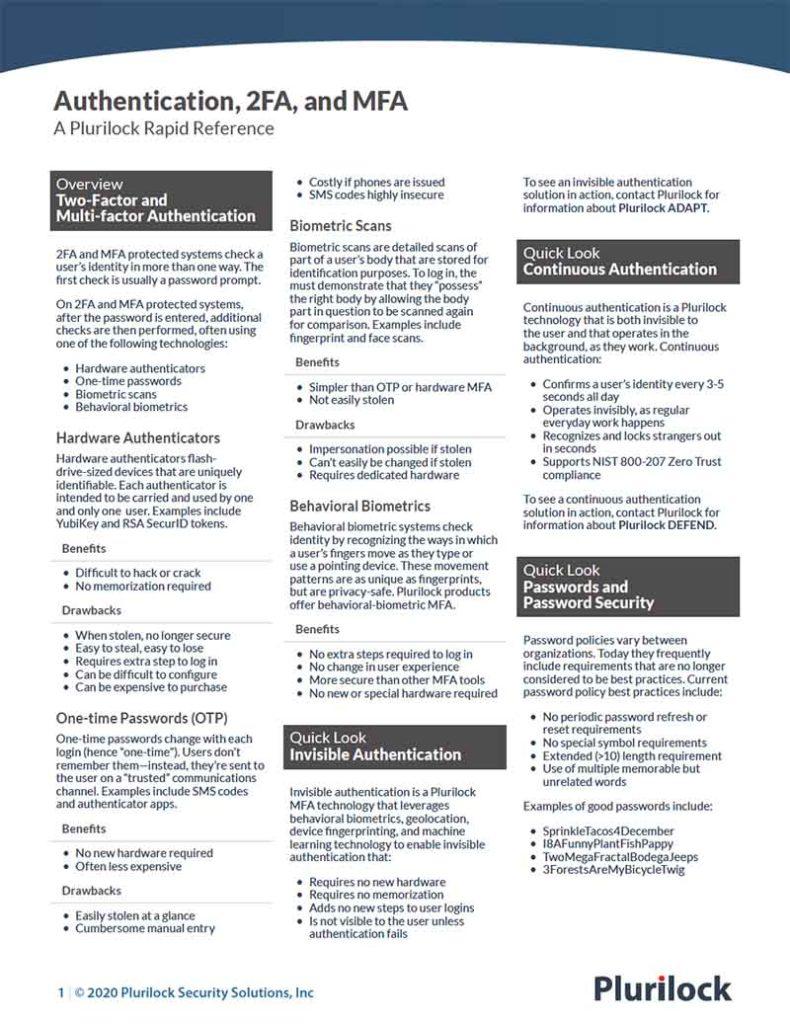Cybersecurity Reference > Glossary
Identity Signal
An Identity Signal is a form of data that can be used to uniquely identify an individual.
Common identity signals include entered knowledge (passwords, biographical data), biometric measurements, captured behavioral-biometric data, ambient information sources such as location, network context, or browser fingerprint, and the presence of uniquely identifying objects such as a mobile phone. In multi-factor authentication (MFA), identity signals comprising two or more identity factors (things known, things possessed, or things embodied) are combined to establish a user's identity.

2FA/MFA Rapid Reference
Authentication at a glance
Download the 2FA/MFA Rapid Reference now:
- 2FA and MFA basics and common solutions
- The benefits and drawbacks of each
- Glossary of authentication terms
2FA/MFA Rapid Reference
- 2FA and MFA basics and common solutions
- The benefits and drawbacks of each
- Glossary of authentication terms
Downloadable References
PDF
Sample Governance Policy for AI Use
Sample, shareable addition for employee handbook or company policy library to provide governance for employee AI use.
PDF
Establishing Guardrails for AI Whitepaper
Generative AI is exploding, but workplace governance is lagging. Use this whitepaper to help implement guardrails.
PDF
Practical Cybersecurity Cheat Sheet
Cheat sheet for basics to stay secure, their ideal deployment order, and steps to take in case of a breach.








